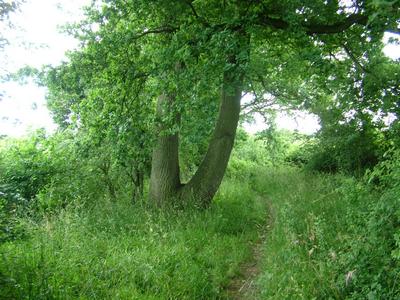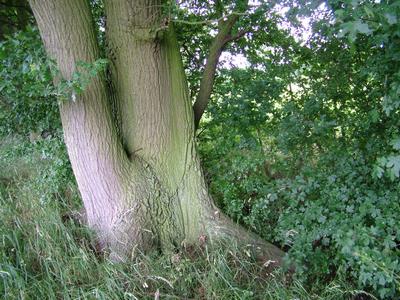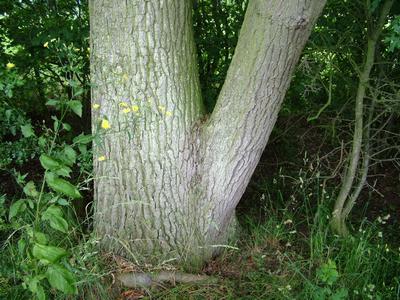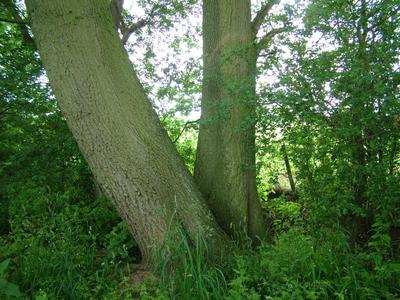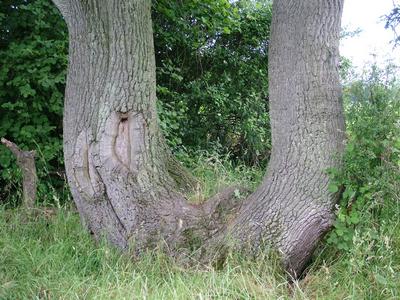In Wichenford there is a stretch of bridle path known locally as Peter Street. A joy to walk at all times of the year, it is particularly remarkable for the number of 'double' trees i.e. two same species trees growing from the same spot. Within a short space of less than 500 yards there are five notable examples - all oaks - with another four possibles within a short distance.
When Harry Green happened to mention on a walk to look at ancient pollards nearby that he was interested in 'doubles' and whether or not they were one and the same tree i.e. genetic twins or whether they were two separate trees that had happened to grow close to one another, I recounted the following story to him, which I had read in The Countryman magazine some years ago.
" A man had just moved to a cottage in the countryside that lay at the end of a cul de sac: beyond his house the road petered out into a green lane and so except for the occasional walker or rider he was undisturbed by traffic. So when one day he saw a white van go past the house, he was curious enough to go out and investigate. Someway down the green lane the van was parked and a tall man was leaning against it surveying the lane. Good mornings were civilly exchanged and the visitor offered an immediate reason for his being there. "We were travellers, my family, until recently. We're settled now but we used to camp here in this lane many years ago and I come back from time to time to see my daughter". A look of puzzlement brought forth the added information: "You see, when a child died, it was our custom to bury them outside the camp, with an acorn in each hand. My daughter died young and that's her tree…" and he pointed to a fine specimen of an oak across the lane."
Parish records frequently mention gypsy camps on nearby Kings Green during the 20th century. Perhaps Peter Street was sufficiently 'outside the camp' to suit as the last resting place for their beloved children, each grasping their acorns in the hope of further existence as an oak….. or, if conditions were favourable, as two oaks growing so close together they could be mistaken for twins!
Appendix – a similar story
Chris Marnham on a Gypsy character whose life on the road was tinged with great sadness.
From The Countryman May 2003
(1st paragraph)
I'm not allowed to tell you exactly where, but there's a lonely Kentish lane beside which a little girl lies buried in the shadow of a hedge. Her arms had been tenderly arranged across her breast and acorns placed in their tiny hands. Though she had been much loved, she was unbaptised and no record of her short life has ever existed. Only a healthy oak sapling marks the place.
(last two paragraphs)
In early middle age Lijah learned to read and he became less self-consciously 'the true gypsy'. But when tragedy struck and he lost a baby daughter, grief stirred his instinctive poetic nature and he revived a long abandoned Gypsy tradition and buried her by night beside the lane his family had so often traveled.
People passing on their way would keep her from being lonely, he told me. And the acorns she clasped would grow into a fine oak tree, so that in his old age he could lie in the long grass and meadow flowers beneath it, listening to her whispering to him in the gentle stirring of its leaves.
